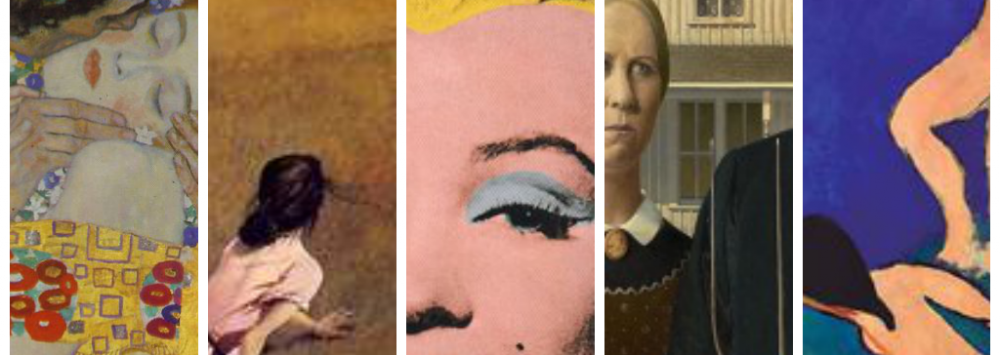The Man
Francis Bacon was born in Dublin, Ireland in 1909. In 1926, at only 17, Bacon faced rejection from his household for his open homosexuality. He began painting in his early twenties after being inspired by a 1927 exhibition of Pablo Picasso’s work he visited in Galerie Paul Rosenburg. Bacon then moved to England, where he pursued his artistic desires. Unable to settle into a stylistic niche, Bacon’s artistic career didn’t take off until his mid thirties with the creation of his 1944 triptych Three Studies for Figures at the Base of a Crucifixion. Bacon’s career continued well into the 20th century, and he maintained his reputation as an angsty chronicler of the human condition. In 1971, Bacon’s partner, George Dyer, committed suicide, which would have a surprisingly minuscule effect on the emotion in his work. During his early career, Bacon would destroy most of the works he disliked, which may attribute to the high value of those that remain. Last year, Bacon’s painting Three Studies of Lucian Freud swsold for a world record $142,405,000.
The Movement
Angst. This is the most concise description of the Expressionist Movement. With World War I on the horizon, the mood during the early 20th Century was rather solemn. Most works used muted– or cool — tones to express emotions darker than those of the Fauvist movement which, while not much earlier, was Expressionism’s forefather. Two prominent figures of this movement were the groups Die Brucke (The Bridge) and Der Blaue Reiter (Blue Rider), both of which contained many talented Expressionist Artists. While Die Brucke highlighted social and political themes of the time and Der Blaue Reiter focused on mysticism and spirituality, the two challenged convention by abandoning technical and moral restraint. Together, these groups spearheaded the avant garde movement towards Modernism. Francis Bacon, with his sexuality alone, dared to challenge the conventions of his time. Through his work, Bacon highlighted perpetual isolation, a brutally somber theme that breeds what Expressionism represents: angst.
Technique/Influences
Paint was Bacon’s most common medium. His first painting to attract public attention– Crucifixion— was inspired by Pablo Picasso’s 1925 piece, Three Dancers Bacon was quite representative of the Expressionist movement in that he didn’t have a uniform style, however, the message in his work remained widely the same. As mentioned earlier, the death of Bacon’s longtime parter, George Dyer, slightly impacted the tone of his subsequent works. Bacon was no stranger to misery, having been ostracized by his family and losing a number of close friends along the way. This attributes to the morose nature of his compositions for which he is so famous.
21st Century Comparison: Collier Schorr
A native of Queens, New York, Collier Schorr is a photographer best known for her success in capturing the whimsical nature of adolescence. However, there is more to her than just this– she also confronts what she believes to be her deepest fears. A German Jew, Schorr is captivated by the modern Aryan man and the novelty of him wearing a Nazi uniform. Having family in Germany whom she visits frequently, she did a photo shoot with her younger cousins– then teenage boys, now men — who used to be infatuated by the thrill of war and collected uniforms from local surplus stores. Schorr’s work reminds me of Francis Bacon and the Expressionist Movement as a whole for its reflection on war as opposed to the Expressionists’ anticipation of the impending calamity. I found Schorr’s attempts to resurrect the dead Nazi soldiers through her photography shockingly similar to Bacon’s somber representation of love and longing by creating these images of isolation.
My Thoughts
Through his work, Francis Bacon seemed to be sharing with the world the loneliness he felt as an openly gay man living in the early 20th century. Regarding the purpose behind his work, I see him as a leader of an avant garde of his own, breaking social barriers while, unfortunately suffering the immediate consequences that come with it. As a critic of his technique, I appreciate the inconsistency in his compositions, shifting from tryptech (Three Studies for Figures at the Base of Crucifixion) to self portrait to pencil sketch (Crucifixion). I would say one commonality I found in his work is that sense of isolation, perhaps it is peaceful, perhaps it is terrifying.
Bibliography
Www.PBS.org/art21/
Www.Tate.org.uk
ArtAuthority (app)
Www.guggenheim.org
Gallery

Collier Schorr, “Helmet Kindling and Deer Feed (Winter) Durlangen,” 2000.




